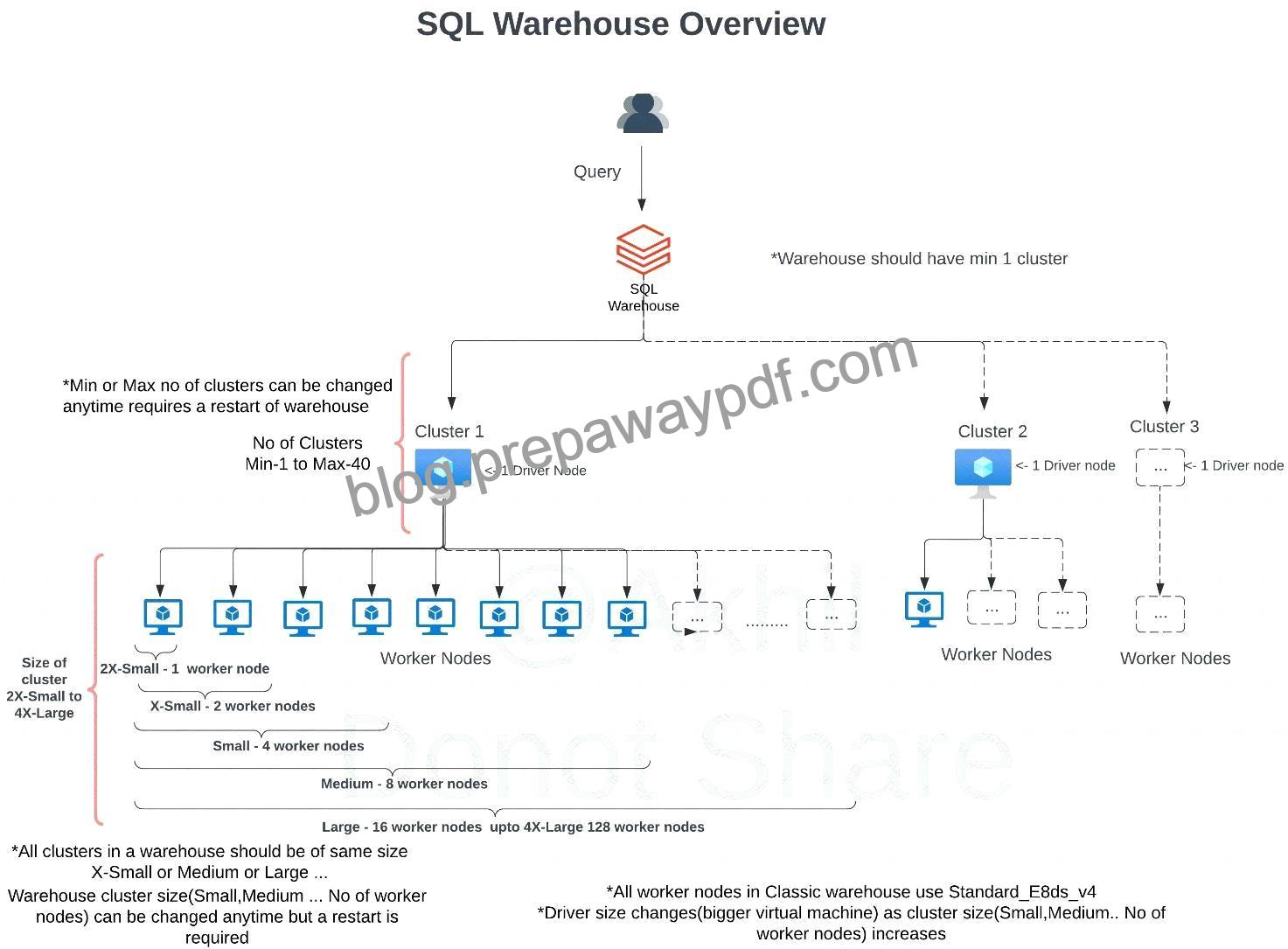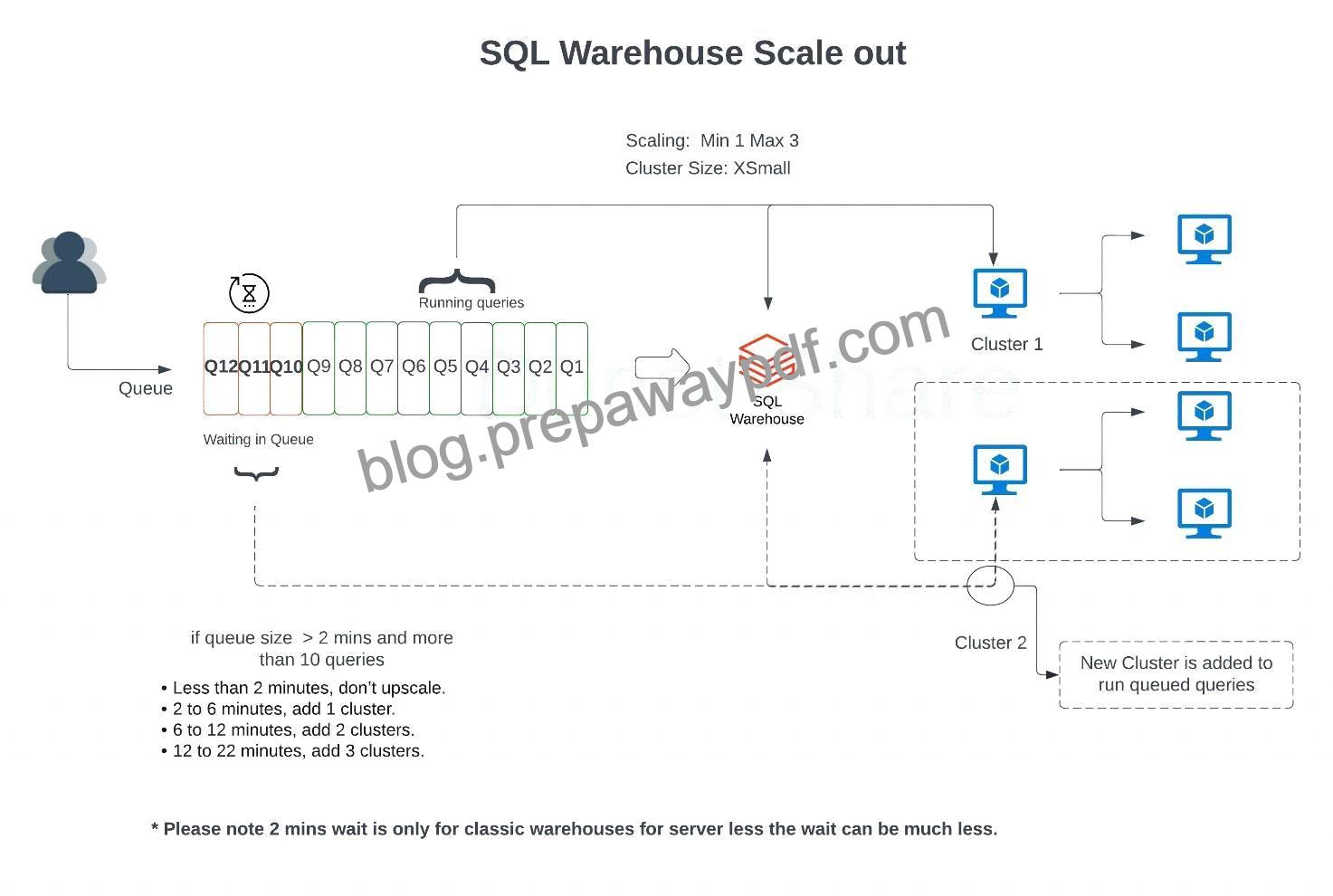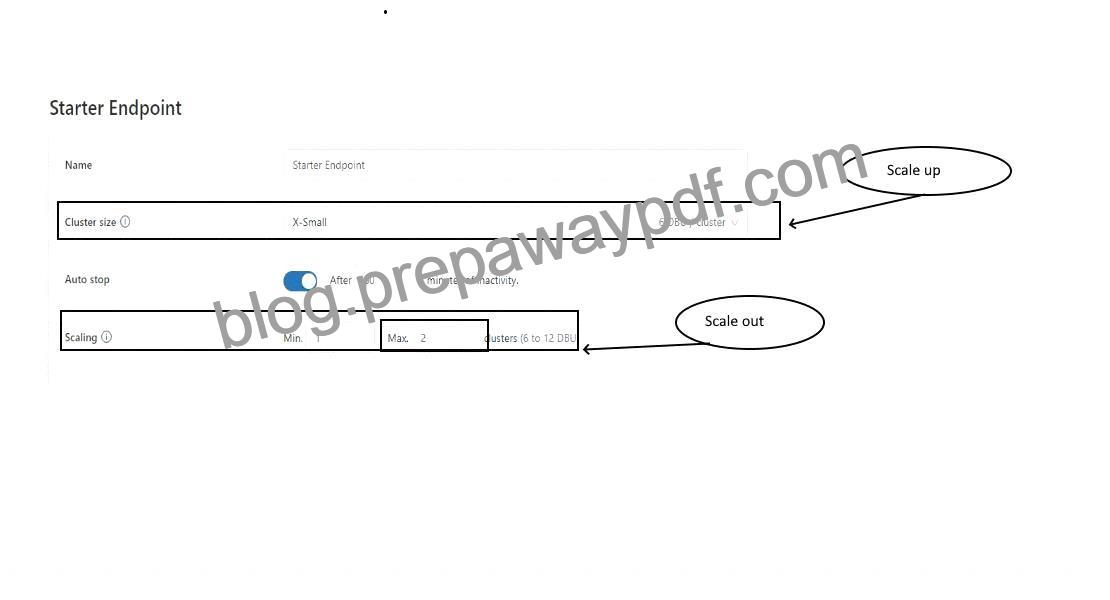NEW QUESTION 95
You are currently working with the application team to setup a SQL Endpoint point, once the team started consuming the SQL Endpoint you noticed that during peak hours as the number of concur-rent users increases you are seeing degradation in the query performance and the same queries are taking longer to run, which of the following steps can be taken to resolve the issue?
Explanation
The answer is, They can increase the maximum bound of the SQL endpoint’s scaling range, when you increase the max scaling range more clusters are added so queries instead of waiting in the queue can start running using available clusters, see below for more explanation.
The question is looking to test your ability to know how to scale a SQL Endpoint(SQL Warehouse) and you have to look for cue words or need to understand if the queries are running sequentially or concurrently. if the queries are running sequentially then scale up(Size of the cluster from 2X-Small to 4X-Large) if the queries are running concurrently or with more users then scale out(add more clusters).
SQL Endpoint(SQL Warehouse) Overview: (Please read all of the below points and the below diagram to understand )
1.A SQL Warehouse should have at least one cluster
2.A cluster comprises one driver node and one or many worker nodes
3.No of worker nodes in a cluster is determined by the size of the cluster (2X -Small ->1 worker, X-Small ->2 workers…. up to 4X-Large -> 128 workers) this is called Scale up
4.A single cluster irrespective of cluster size(2X-Smal.. to …4XLarge) can only run 10 queries at any given time if a user submits 20 queries all at once to a warehouse with 3X-Large cluster size and cluster scaling (min
1, max1) while 10 queries will start running the remaining 10 queries wait in a queue for these 10 to finish.
5.Increasing the Warehouse cluster size can improve the performance of a query, example if a query runs for 1 minute in a 2X-Small warehouse size, it may run in 30 Seconds if we change the warehouse size to X-Small.
this is due to 2X-Small has 1 worker node and X-Small has 2 worker nodes so the query has more tasks and runs faster (note: this is an ideal case example, the scalability of a query performance depends on many factors, it can not always be linear)
6.A warehouse can have more than one cluster this is called Scale out. If a warehouse is con-figured with X-Small cluster size with cluster scaling(Min1, Max 2) Databricks spins up an additional cluster if it detects queries are waiting in the queue, If a warehouse is configured to run 2 clusters(Min1, Max 2), and let’s say a user submits 20 queries, 10 queriers will start running and holds the remaining in the queue and databricks will automatically start the second cluster and starts redirecting the 10 queries waiting in the queue to the second cluster.
7.A single query will not span more than one cluster, once a query is submitted to a cluster it will remain in that cluster until the query execution finishes irrespective of how many clusters are available to scale.
Please review the below diagram to understand the above concepts:
Box and whisker chart Description automatically generated

SQL endpoint(SQL Warehouse) scales horizontally(scale-out) and vertical (scale-up), you have to understand when to use what.
Scale-out -> to add more clusters for a SQL endpoint, change max number of clusters If you are trying to improve the throughput, being able to run as many queries as possible then having an additional cluster(s) will improve the performance.
Databricks SQL automatically scales as soon as it detects queries are in queuing state, in this example scaling is set for min 1 and max 3 which means the warehouse can add three clusters if it detects queries are waiting.
Diagram Description automatically generated

During the warehouse creation or after you have the ability to change the warehouse size (2X-Small….to
…4XLarge) to improve query performance and the maximize scaling range to add more clusters on a SQL Endpoint(SQL Warehouse) scale-out, if you are changing an existing warehouse you may have to restart the warehouse to make the changes effective.
A picture containing diagram Description automatically generated


